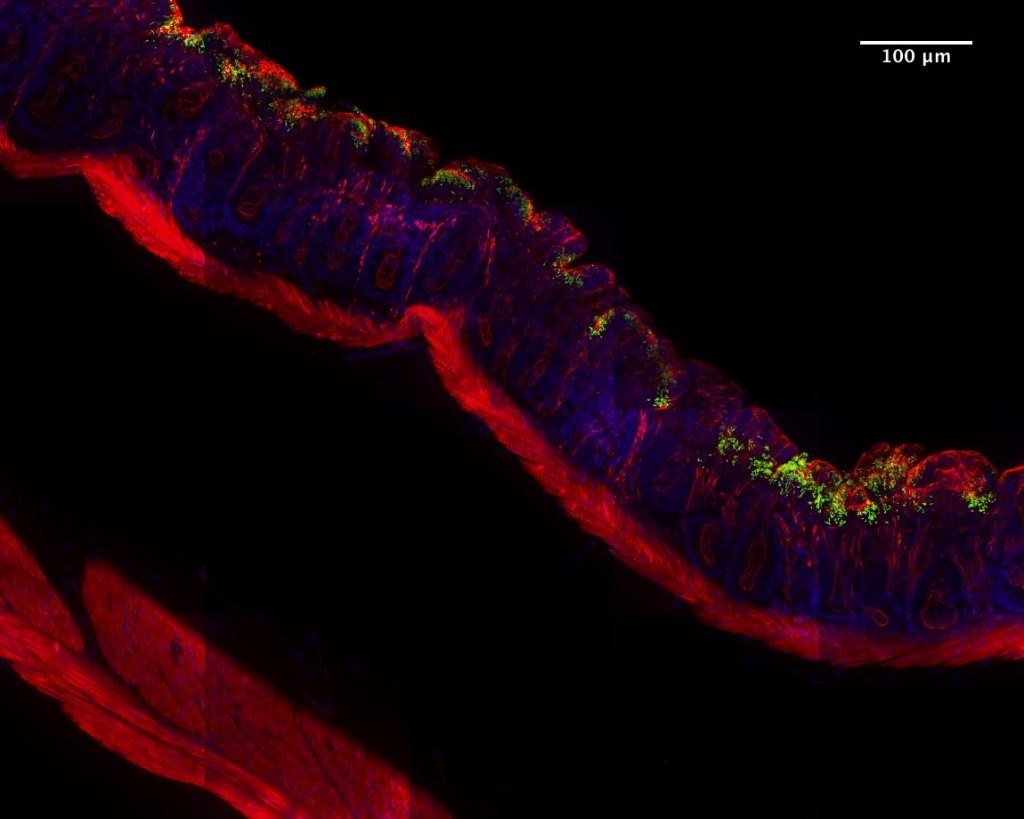Presentation.
The Yokagawa CellVoyager CV1000 is an automated microscope based on the spinning-disk technology.
It excels at multi-scale microscopy, when locating rare events in a large sample is needed. Applications typically consist in scanning the sample at low magnification to locate events, then switching to a high magnification objective to acquire high-resolution, 3D images of the event.
The microscope is not limited to fixed samples, as it ships a full environmental control to do live cell experiments.
It is a spinning-disk confocal microscope, and hereby offers the ability to acquire quickly and with a high sensitivity 3D optically-sectioned slices of the sample.
Specifications.
- Objectives installed: 10x air (0.4 NA); 20x air (0.7 NA), 40x air (0.95 NA), 40x oil (1.3 NA), 60x water (1.2 NA) and 60x oil (1.4 NA).
- Three laser lines: 405nm, 488nm, 561nm.
- Emission filters:
- BP1: 417 – 477 nm (DAPI and co.)
- BP2: 500-525 nm (AF488 and co.)
- BP3: 600-633 nm (AF568 and co.)
- Transmitted light.
- High-sensitivity camera (EM-CCD, 92% nominal QE).
- Autofocus mechanism, both in software mode (classical) and in hardware mode (finds the surface of the coverslips by itself).
- Full environmental control: CO2 and temperature.
- High precision XY stage to build large areas of imaging thanks to tiling.
- Intuitive software.
- Carriers for microscopy slide, 3.5cm ø glass-bottom petri dishes and microplates (92 well plates and 384 well plates).
Resources.
Example images:
(blue: DAPI; green: Shigella Flexneri; red: actin-phalloidin)
Taken from:



